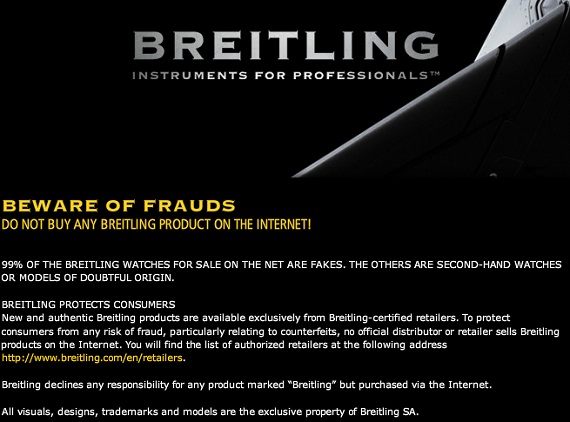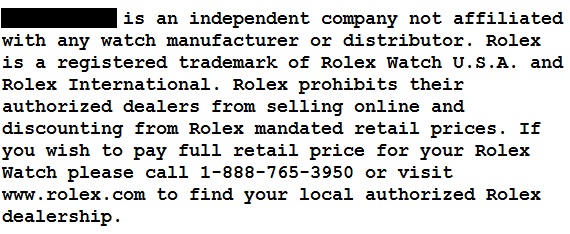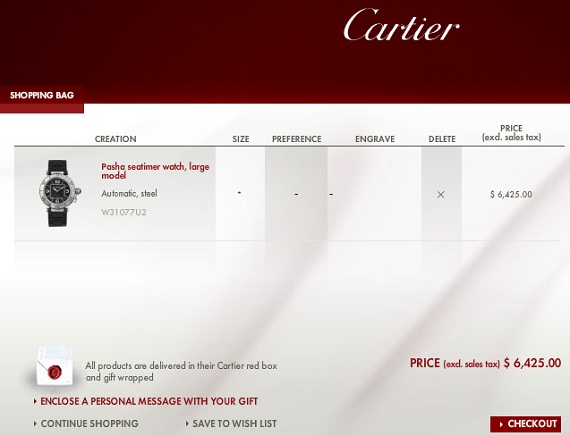
Watch brands are systematically killing off their network of authorized dealers that historically have helped them so much. One by one, retailers get ominous letters in the mail informing them that a long-term partner will no longer be sending them inventory. Why are the major watch brands doing this? And what does this mean for the future? Read on…
After years of struggle, and a complex accumulation of factors, the industry of selling watch is about to rapidly change. It isn’t so much a matter of a black and white distinction (in terms of one thing is totally in and another thing is totally out), but the old business model is more or less – dying a slow, painful, and less than quiet death. Here is how it used to be – for well over 100 years. Watch brand sells watch at wholesale rate to watch retailer (known as the authorized dealer). Watch retailer sells the watch for the retail price and keeps the difference as its profit (usually about 50%). In exchange for buying watches from the factory before they are sold to consumers, retailers often (but not all the time) get exclusive rights in a particular area or territory in which to sell the watch. It was a win-win situation for people making watches and people who have the ability to sell the watches. This is the way it was, and people were happy (as long and consumers were buying watches that is).
Then came the Internet. At first, the one dimensional virtual world was merely a place for information dissemination. Fans might discuss watches in primitive forums, and some enthusiast communities sprouted. At some point after that in the mid to late 1990s, people started to buy and sell watches online. The borderless Internet didn’t care about things like territory or manufacturer restrictions on prices. People bought and sold pre-owned watches, retailers sold hard to sell watches online at a discount, and the gray market which existed outside of the authorized dealer / watch brand relationship flourished. Then also came the sophistication of the replica market. Able to offer goods that used to be only available in seedy areas, online to compete with authentic items, and confuse consumers.

Things started to get bad for retailers who initially were excited about the prospects of the Internet. Not only were they barred by the brands from selling online, but online shops were undercutting their prices (an profits). Online retailers experienced lower cost businesses without the traditional overhead costs, and gray market goods could be cost at almost any price over cost, with no brand restrictions. This made doing business online very attractive. Though the biggest attraction of the Internet was the worldwide market. Instead of just the people who came into your store, you could do business with the world. Sure stipulations and complexities applied, but the Internet seems like the end of the retailer.
Brands and retailers fought back. Not very well, but they fought. Brands pressured consumers not to buy online, and threatened to remove warranties on products not sold in the traditional manner through retailers. Retailers communicated the value of service, personal treatment, and after-sales support to consumers as a way of getting people to buy from them. Perhaps those promises would have been enough if they could deliver. Lowering profits meant lower wages, and watch sales people quality plummeted. There are still good watch stores out there, but for the most part, good ones are few and far between.
Internet shopping was easy, efficient, no pressure, allowed for quick research, offered a world of choices, and was cheaper than buying in a store. The only advantage many stores still had was the support from the brands and the newest watches. That and the fact that many consumers actually want to touch and see watches they want to buy. Which is partially where I come in. In addition to notifying consumers about new products, I also offer advice rich reviews and actual product images. With sites like aBlogtoRead.com, you could conceivable learn about, research, and buy a watch all without every stepping into an authorized dealer’s store.

Watch brands understood the major problems facing them and their business model. The Internet wasn’t going anywhere no matter how much they ignored it, and it was only a matter of time until they had to deal with it. Brands had no experience with the internet. Most brands didn’t (and still don’t) know how to do anything but make watches. To a large degree, their problem with dealing with the Internet is one of justifiable ignorance. That and the fact that they couldn’t look to others for examples on how to deal with this issue. While the economy remained pleasant from 2001-2007, they just puttered along more or less happy.
Then the economy tanked. I mean really tanked. It was hell on the luxury watch industry. Companies started laying off people like it was fashionable, and many doors closed for good. The global financial meltdown killed the desire to spend excessive amounts of money on luxury goods, especially watches. It was a do or die time to think about the future and form a new business model. The brands had a couple of problems. First, the Internet was screwing with their pricing models and their relationships with their retailers. Second, they were bloated. Overall, many of them had too many redundancies, inefficient cost structures, and a reliance on unreliable suppliers. It was really time to change things, especially while they didn’t have watch sales to worry about.
Change first came internally. Many brands started getting wise to “doing it themselves.” You see more and more brands with in-house movements, marketing departments, and a tendency to rely on outside suppliers as little as possible (which is still a lot in many cases). If you do use suppliers, then it is very attractive to visit China, where goods are often 50-70% of the quality, for 20-40% of the price for Swiss or other European parts.

Brands also took a very close look at the Internet and what it was doing. Are people buying watches? Are they buying expensive watches? The answer to these and more questions was undeniably “yes.” Marketing was cheaper online, and setting up shop was easier as well. You could have a simple website with an e-commerce component and theoretically sell your products to people all over the world (and while watch brand websites still are horrible to navigate and slow, things are slowly changing). The only problem was the traditional retailers. The existing network of stores all over the world each with their own promised territory or expectations. Internet retailers would obviously compete with brick-and-mortars ones – no questions about it.
How to resolve the problem? The brand could sell directly to consumers online and make a deal with existing retailers to cut them in. Alternatively the brand could directly sell online and have their own brand owned stores. That way there was no competition and you could have inventory placed all over the world. More important, you wouldn’t have to split profits with retailers. The new model looks like it had no place for third-party authorized dealers. Ethically a lot of issues exist. You remove a brand from a store that is selling there and you can easily force a business to shut down and put people out of work and livelihoods. Regardless, business needs dictate actions. So you know what is being done.
Terminating relationships with third-party retailers also solved a few other problems. Because there was no more wild card authorized dealers selling unsold stock into the gray market, the gray market would eventually not include their brands, or only include pre-owned models. This way pricing was much better regulated and you could feel more confident that there was price consistency. Also, you could have a very linear marketing approach. Advertise online and the ad could link directly to e-commerce site, and consumer could buy a watch right away. No longer would you need to rely on a consumer to proactively “call for more information.”

While much of what I am explaining is a quick and dirty simplified look at the history and state of the industry, this is exactly what is happening right now. I am making it a point not to mention specific brands, but you are going to see more brand boutiques and online sales direct from brand very soon. Brand owned boutiques will take over much of the need that third party stores used address. The brand boutiques still serve an important function. Not only for inventory, but also for people who need to physically see watches and want that in-store sales and service experience. That type of need or customer request isn’t outmoded, so it should still be available. Only now, it will be the brands themselves that facilitate it.
Currently, authorized retailers all over the world are having their status as authorized dealers stripped from them. Brands are finding any little reason to do so, or are simply pulling the cord on the relationship. All of this is in preparation for an onslaught of brand boutiques (first in major markets and cities), and of course for online brand sales. Does this mean that every authorized dealer or independent watch retailer will go extinct? No. They will still be helpful as many of them have excellent customer relationships and placement. But they will be much less common. Also, smaller independent brands that don’t have the resources for such ambitious plans as the major companies will find new welcoming doors at retailers that traditionally would have shunned them.
The future as I see it will be very different. Major watch brands will have their own brand boutiques all over the world and offer direct to consumer online sales. Prices will be very static, and the gray market will shrink significantly (unless the brands themselves feed that market). The remaining independent watch retailers will carry smaller brands, and be harder to find. In addition, new businesses will pop up to help small brands get online and market themselves properly for worldwide sales. There are a number of logistical and legal issues to figure out, but it is all coming sooner than you might think to a place near you. As of now major brands have begun to offer online sales. They still aren’t as smooth as they should be, but the slow to change watch industry is seriously changing course.

